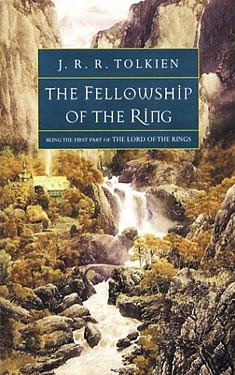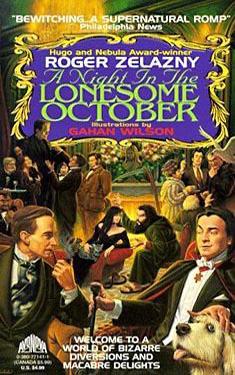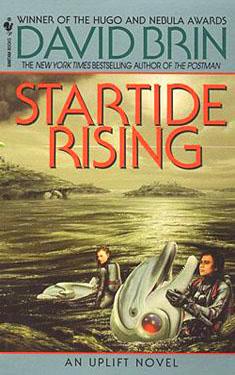JRR Tolkien
Completed 2/16/2015, Reviewed 2/17/2015
5 stars
This is my fourth reading of The Lord of the Rings. This is perhaps the most challenging. Let me begin by saying I love the Peter
Jackson films. Despite the omissions and
liberties he took, I thought he did a tremendous job capturing the essence of
the films. In fact, I just recently
finished a day-long marathon of the Blu-Ray extended edition, from about 11
a.m. to almost 1 a.m. My last reading of
LOTR was back around ’83, so my memory of the details are not very sharp, and
I’ve been able to watch the films without saying, “But what about…?” every few
minutes. Now in anticipation of reading
the books with the imagery of the films in my head, I wasn’t sure how I’d be
able to appreciate the books as I had during my first readings. Fortunately, I didn’t have a problem. Instead, my mind went back to my own images I
remember from all those years ago, peppered with the art of the Brothers
Hildebrandt’s Tolkien calendars of the ‘70s.
And my experience of the actual reading has been more of a “Oooh, I
remember that!” and “I don’t remember that!” and finally a “Why am I not one of
those people who rereads this every year!”
 The story centers on Frodo Baggins, a hobbit from the Shire
in Middle Earth. He inherits a magic ring from his uncle, Bilbo, who stole it from a creepy creature named Gollum in
“The Hobbit”. Gandalf the Grey, a wizard
and great friend of hobbits, concludes that the ring is the one Ring of power,
belonging to Sauron, the Dark Lord.
Realizing that Frodo is less subject to the seducing evil of the Ring
than he himself, Gandalf sends Frodo with the Ring to Rivendell, home of Elrond
and a community of Elves to discern what to do with it. At Rivendell, a grand council decides the
ring must be destroyed in the volcano in Mordor. Frodo volunteers for the task, along with Gandalf,
three other hobbits, two men, an elf, and a dwarf. But the fellowship is doomed, leaving the future of Frodo and the Ring, as well as the whole of Middle
Earth in question.
The story centers on Frodo Baggins, a hobbit from the Shire
in Middle Earth. He inherits a magic ring from his uncle, Bilbo, who stole it from a creepy creature named Gollum in
“The Hobbit”. Gandalf the Grey, a wizard
and great friend of hobbits, concludes that the ring is the one Ring of power,
belonging to Sauron, the Dark Lord.
Realizing that Frodo is less subject to the seducing evil of the Ring
than he himself, Gandalf sends Frodo with the Ring to Rivendell, home of Elrond
and a community of Elves to discern what to do with it. At Rivendell, a grand council decides the
ring must be destroyed in the volcano in Mordor. Frodo volunteers for the task, along with Gandalf,
three other hobbits, two men, an elf, and a dwarf. But the fellowship is doomed, leaving the future of Frodo and the Ring, as well as the whole of Middle
Earth in question.
Tolkien’s prose is really lush without being
pretentious. I was quite amazed at how
detailed his landscapes are, describing what we can see from all four directions. Being a bit directionally impaired (just take
a drive with me on windy roads), I often got turned around with what I should
be seeing where. But by the end, I felt
like I had successfully merged the map of Middle Earth with the descriptions
pretty well. I have to say that speaks a
lot to the prose.
I couldn’t find much fault in the book. I do have a few complaints, as usual, but
they are pretty nit-picky. I was first
struck by how much Fellowship relies on exposition. Perhaps I am more accustomed to modern
fantasy narratives that follow multiple characters contemporaneously, much like
the films, and films in general do. I
actually didn’t mind the regressions though.
Tolkien tells stories, and the exposition scenes allow Tolkien to tell
stories within the story, and the exercise provides us with a better sense of
the major characters as they recount events through their point of view.
Another point that bothered me had to do with some of the
characterization. I didn’t feel the
tension between Gimli and Legolas at the beginning of the fellowship. When they become best buds after leaving
Lothlorien, I felt like I missed where they were less than friendly towards
each other. The seduction of Boromir by
the Ring also left a little to be desired.
It seems like we get to see it briefly at the Council of Elrond, but we
don’t see its progression. When he tries
to take the Ring from Frodo, it seems a little out of the blue, and the only
reference to Boromir’s change is Sam saying that he’s been a bit queer
lately. As a counterpoint, Aragorn has a
much stronger presence. At times he
despairs and is even self-deprecating; other times, he bears the kingly
confidence that is his destiny. But at
this point in the book, Aragorn is a major character, whereas Gimli, Legolas,
and Boromir have supporting roles.
Still, I think I would have like to have seen a little more out of them.
Lastly, I cringe at Tolkien’s use of adverbs. Having taken a creative writing class, being
exposed to people learning technique, and reading a lot of more literary novels
has made me hyper-aware of their use.
While not Tom Swifties (“I’m thirsty,” said Tom dryly), it still raises
my hackles. It makes me wonder about
older writing, if sprinkling adverbs through your verse was less problematic
than it is now. While I’ve read a lot of
literature, I have not read much classic literature, something I hope to slowly
correct. So I don’t have much to compare
against. Contextless, I suppress my gag
reflex and push on.
Despite these issues, reading Fellowship has been a
calmly-paced respite from the realities of daily life. I just love reading it. I love the characters, particularly Galadriel. It never feels pretentious, difficult, or
terse. Perhaps I can’t honestly review
any of the books in the trilogy because I was so obsessed with it as a teen (I
even gave myself and some of my friends LOTR-based names. Mine was Frodo Muffinbuck). Perhaps having an Alan Lee illustrated,
glossy-paged, oversized hardbound edition adds a pleasure I may not have had
with a mass market paperback edition. Whatever
it is, it makes me love this story even more.
Of all the great fantasy books I have read over my life, there’s nothing
like LOTR. Five out of five stars.
As a post-script, I do want to mention, for readers of this
blog who may not know, “The Lord of the Rings” is a single book. The breaking up of it into a trilogy was
forced upon Tolkien by the publisher. So
rating Fellowship by itself feels a little odd, almost sacrilegious. I remember from my first reading feeling that
“The Two Towers” lagged a bit, like many second books in fantasy and SF series
these days. I remember giving it three
out of four in high school (yes, I was rating books back then too). I’m about forty pages in now, and it doesn’t
feel that way yet. It feels like I
really am reading just one book in three, easy-to-hold containers. I think I’ll be able to keep this perspective
because rereading it at this point in my life…well, just feels right.
 Unfortunately, the book never quite came together for
me. I think the biggest problem was the
slow buildup. There are thirty-one
chapters, one for each day in October, and the game isn’t revealed until October
26th. Everything before that
is a confusing string of events as perceived by Snuff. Though there were some amusing moments, it
generally dragged. And Snuff is cute, but
I could not get into his character. All
the supporting animals had interesting little encounters with Snuff, but they left
me cold as well.
Unfortunately, the book never quite came together for
me. I think the biggest problem was the
slow buildup. There are thirty-one
chapters, one for each day in October, and the game isn’t revealed until October
26th. Everything before that
is a confusing string of events as perceived by Snuff. Though there were some amusing moments, it
generally dragged. And Snuff is cute, but
I could not get into his character. All
the supporting animals had interesting little encounters with Snuff, but they left
me cold as well. 
